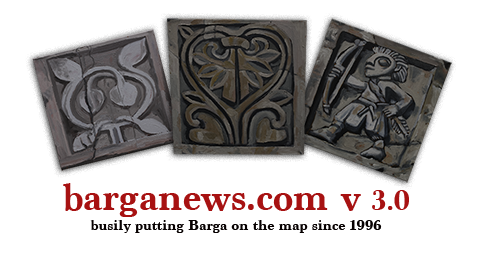[one_half] Not far away from the Duomo the complex of the Conservatoire and the church of Santa Elisabetta is situated, a nunnery founded in the middle of the 15th century, whose church was built as from 1506, when the nuns asked for permission to build next to the town walls.
The small building is full of important works of art, such as the two glazed terracotta: the Madonna with Child in garland of flowers and fruits (c. 1505) by Giovanni della Robbia and the so-called Madonna della Cintola (c. 1510) by the Florentine workshop of Benedetto Buglioni.
The glazed technique invented by Luca della Robbia to protect his creations from the elements prompted Leonardo to say that it ”had made painting eternal”.
Although a talented sculptor, Della Robbia was best known for this glazing which ensured that the colour and precision of his sculptures long outlasted those of his rivals.
The technique was a closely guarded secret, shared only with family members, and continues to astound experts today.
Laboratories in the Louvre have been carrying out diagnostic tests for months aimed at discovering the Della Robbia secret but have so far been unable to reproduce the technique.
On the left wall of the church, which houses 18th-century tapestries and specimens of refined silverware in its sacristy, there is a wooden Crucifix made midway through the 13th century, which expresses a tension and dramatic strain that is clearly Gothic, so much so that it is likely to have been made by French artists.
[/one_half][one_half_last]
The glazed sculpture of Luca Della Robbia and his family, admired by Leonardo da Vinci and whose technique still baffles experts was at the centre of an extremely interesting meeting this afternoon in Barga.
As the Renaissance master Luca, (or his nephew Andrea and the latter’s son Giovanni, nobody is still absolutely sure just who was the actual hand behind the work in the Chiesa di Santa Elisabetta), was at the centre, literally and figuratively of a discussion about sacred art and its position in the church by the art historian and author, Mons.Timothy Verdon.
Non lontano dal Duomo è collocato il complesso del Conservatorio e Chiesa di Santa Elisabetta, convento femminile istituito a partire dalla metà del XV secolo che vide la costruzione della propria chiesa a partire dal 1506, quando le monache chiesero il permesso di edifi care in adiacenza alle mura cittadine.
La piccola struttura è particolarmente ricca di opere d’arte di rilievo, tra cui le due terre invetriate: la Madonna col
bambino in ghirlanda di fi ori e frutta (1505 c.) realizzata da Giovanni della Robbia e la cosiddetta Madonna della Cintola (1510 c.) della bottega fi orentina di Benedetto Buglioni.
Sulla parete sinistra della chiesa, che all’interno della Sagrestia conserva paramenti ed esemplari di raffi nata argenteria del XVIII secolo, è collocato un Crocifisso ligneo realizzato intorno alla metà del XIII secolo, nel quale si esprimono una tensione e una accentuazione drammatica di chiara matrice gotica, tanto da far pensare a una attribuzione a maestranze francesi.
Pascoli e il Conservatorio di Santa Elisabetta – article here[/one_half_last]


